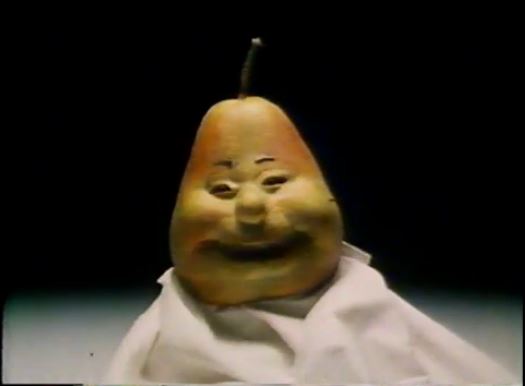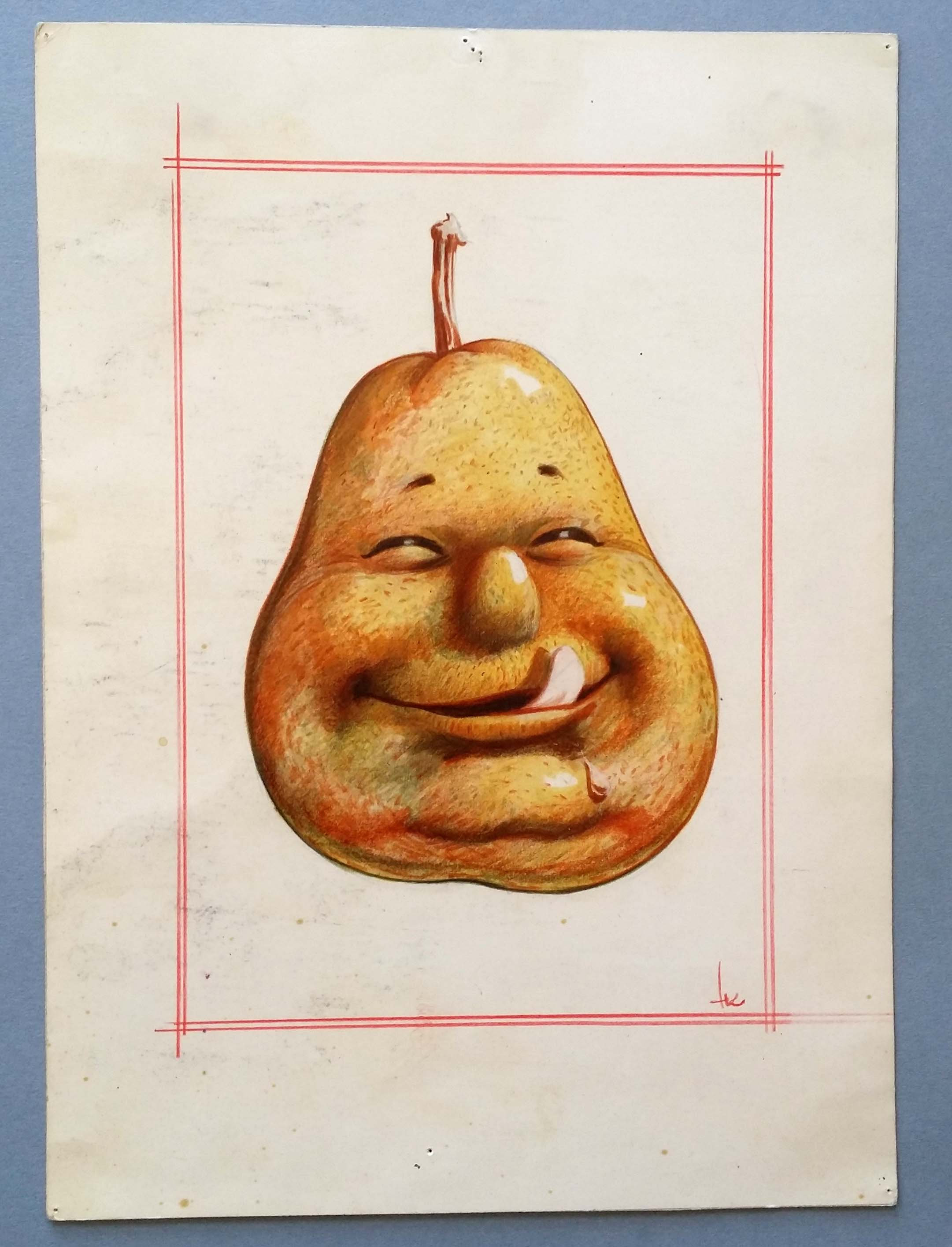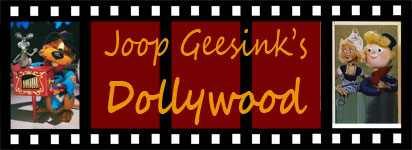
Trivia
It was intended that this commercial would be aired on TV for three years in succession. After the first screenings, a complaint came from the parents of a child with Down's syndrome. They thought that this peer showed too much resemblance to their child. The Dutch Advertising Code Committee agreed with the parents. The film was never shown on TV again. It was ironic that this commercial was awarded best (commissioned) animation film of the year.
No more Dollywood
This film was made by Toonder-Geesink studios. Under this name, a small group of former Hollywood people continued after the Geesink/Dollywood empire went bankrupt. The studio had moved to Nederhorst Castle, where the stop-motion room was housed in the former stables.

The voice says: "Mjamm... (gulp, sigh) it's another best pear year, this year!"

Design in color by Henk Kabos (1974). (Archive EYE Film Institute)
Technique
To animate this pear, Henk Kabos first made a drawing of the front and side (profile) of the pear. The drawing was given to Ton Foederer, who had succeeded the now retired Harry Tolsma. He had succeeded the meanwhile retired Harry Tolsma. He made a model carved from wood. The head was then cast in a silicon rubber mould.
The mould was divisible and consisted of a hollow space in which a very refined system of aluminium wire was mounted. This was a very precise job, as the wires should never touch the mould, otherwise they would be visible later. If the wires were too far apart, they were unusable for animation. Realise that not only the mouth had to be animated, also the eyes had to be animated as well as the eyebrows.
Next, the mould was filled with a latex-foam-rubber mixture. When this had dried, the rubber pear could be removed from the mould and painted using airbrush technique. The whole thing was mounted on a board, around which lay the white napkin. This napkin provided camouflage for the mounting points and the 'invisible' hand that wipes a drop from the corner of the mouth.
Ultimately, two casts were needed, the last of which was used.

Newspaper reports several advertising complaints. One of them is the advertisement of the pear. It concludes that this film has won an award as best animated film of the year.
Credits
| Title: | "Peer" (Pear) | |
|---|---|---|
| Client: | Product Board for Fruit and Vegetables | |
| Year of production: | 1974 | |
| Duration: | 20 seconds | |
| Art Director: | Henk Kabos | |
| Animation: | Cor Icke | |
| Puppet: | Ton Foederer | |
| Format: | 35 mm Eastman color |


